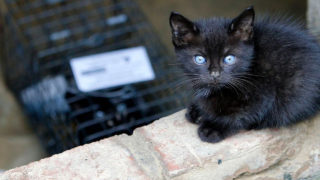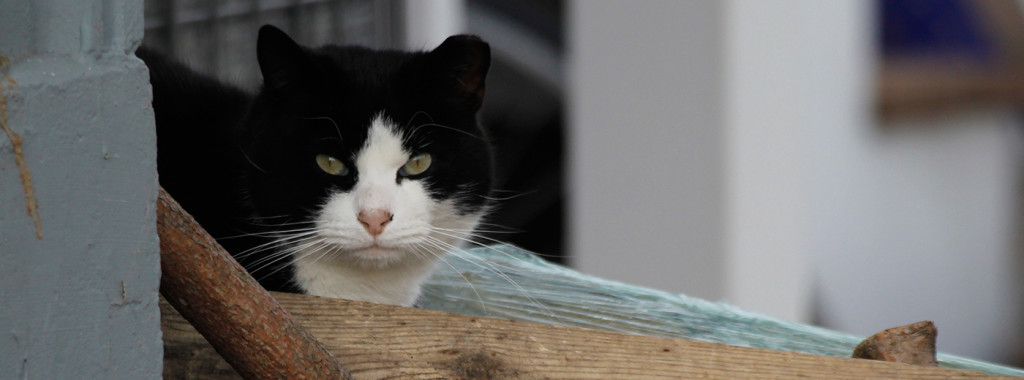September is National Emergency Preparedness Month. This month, make a commitment to hammer down a disaster plan and stock up for emergency kits for your family members, including the furry ones. Make sure you have a plan in place to help ensure your community cats can be looked after should the worst happen.
For over 30 years, Alley Cat Allies has braved the aftermaths of hurricanes, wildfires, tornadoes, and other natural disasters to save cats’ lives. We were on the ground providing extensive support after Hurricane Katrina. We sent a bilingual Rapid Response Team after Hurricane Harvey, saved and reunited cats impacted by California’s Camp Fire through the Alley Cat Allies Recovery Center®, and are still actively working to help cats displaced by historic tornadoes in the U.S. heartland in December of last year. And that’s just scratching the surface.
With that experience in hand, here’s the truth: the best way to protect cats and all animals during disasters isn’t just swift response once they’re over but being prepared before they happen. That spans from individuals creating their own family disaster plans and evacuating with their cats to governments passing laws to streamline setup of emergency shelters for people and animals.
You have the power to take those critical measures for your family. Alley Cat Allies is here to give you the tools and tips you need to make the disaster plan that best suits your needs. We’ve assembled a set of Disaster Preparation Tips for community cat caregivers, pet owners, and others involved with animals. Among the tips:
- Make sure to have descriptions of your pets and the community cats (sometimes called feral cats) you care for, along with photos. If you need to look for displaced cats in shelters or other rescue areas, this will help accurately identify them. Make sure all pet tags and animal microchips have up-to-date information.
- Enlist a back-up caregiver who is responsible for the community cats in your absence, and network with other community cat caregivers in your area to set up a buddy system. This will create a safety net of care for the cats. You may be able to find other cat caregivers in your area through our Feral Friends Network®.
- Create an emergency contact card for your pets and community cat colonies in case you are not immediately available. Include all contact information for your substitute caregiver. Carry this card in your wallet and your car, give copies to your backup caregiver, and post it somewhere visible in your home like on the refrigerator.
- Make a list of local shelters and their contact information. You will need this information in case you need their help or resources.
- Keep an emergency supply kit on hand and know where to find it quickly. Disaster kit basics for pets include a pet first-aid kit, a supply of prescription medications for pets, veterinary and microchip ID records, three to seven days of pet food and dishes, a seven-day supply of bottled water per person and per pet, a litter box and litter, a leash and collar, crate or carrier, blankets, and photos of pets and cats in colonies.
It’s not possible to bring community cats with you when evacuating from disasters, so they need their own special disaster plan. Read our Disaster Proofing a Community Cat Colony resource for guidance.
For more resources to help protect the cats you care for, get our Cat Emergency Guide.


